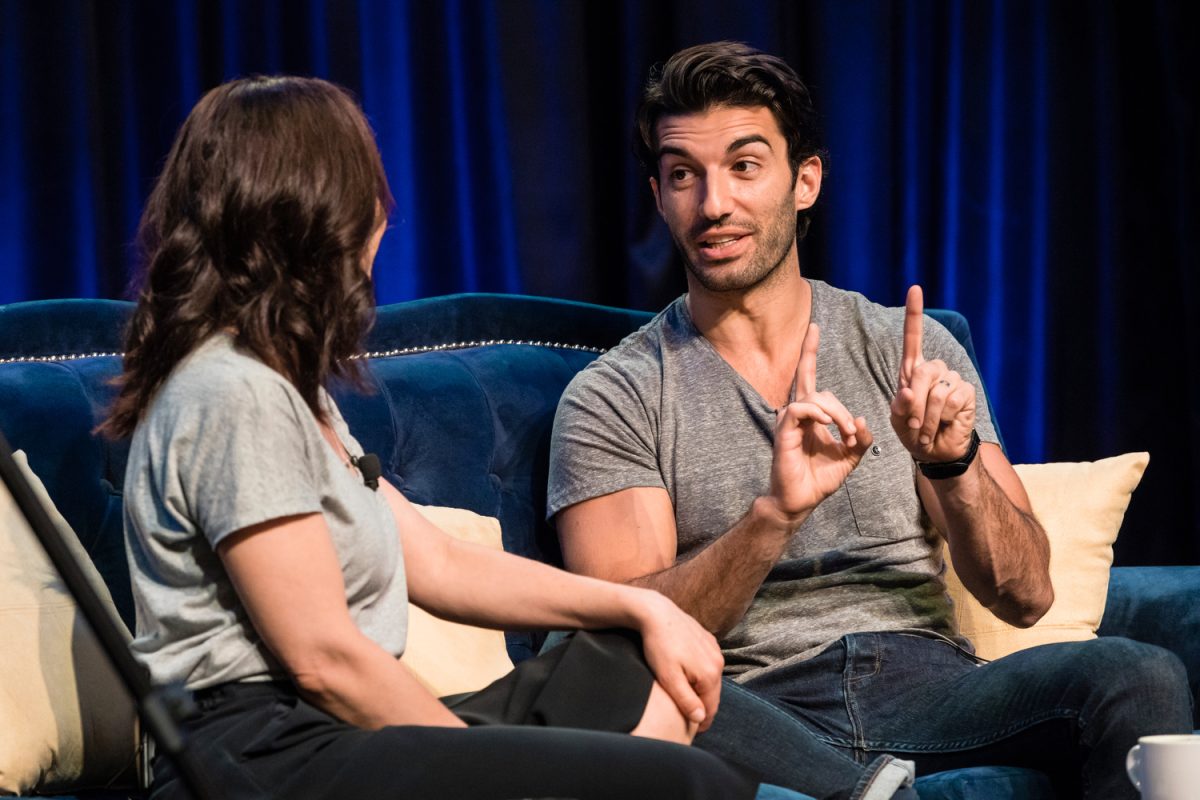“It Ends With Us” by Colleen Hoover is one of my personal favorite books, and most every other 20-something woman in the world would probably agree.
There was something about the detailed and empathetic portrayal of a woman in a toxic relationship that resonated with me. However, when it came to the movie, I was highly disappointed and, at times, offended.
To be completely transparent, I have never experienced an abusive relationship, but I have witnessed people I love go through one.
In a way, I identify with Allysa Kincaid, a character in both the book and the movie who witnesses the pain her best friend, Lily Bloom, endures.
Unfortunately, the film, directed by Justin Baldoni, downplays Lily’s abuse and creates unrealistic standards for its viewers.
In the movie, Lily Bloom, played by Blake Lively, is abused by her boyfriend, Ryle Kincaid, who is played by Baldoni. This abuse initially occurs when he hits her, but she forgives him and returns to their relationship. Another incident follows in which Ryle pushes Lily down the stairs. Both scenes, however, portray the abuse as accidental rather than acts of violence.
This could potentially cause viewers to believe the abuse wasn’t all that bad or not entirely purposeful. The final abusive encounter Lily endures is the first time that viewers see Ryle undeniably hurt Lily by intentionally holding her down and biting her, resulting in Lily leaving for good.
In the midst of the abusive relationship, Lily runs into her ex-boyfriend and first love, Atlas Corrigan, played by Brandon Sklenar. Atlas notices her bruises and marks and questions her.
Atlas tries to convince her to leave and gives his number to her for when she decides she doesn’t want to become just another statistic.
Three incidents were all it took for Lily — four times less than the average number of attempts it takes to leave her abusive partner. This could create an unrealistic standard for those in abusive relationships by suggesting that it’s easy for them to leave.
When I saw the movie in theaters, I wondered if others felt the same. It wasn’t until I opened TikTok and saw multiple videos of women saying they would have taken Ryle back instead of leaving him that I realized the potential damage of underdeveloped stories about intimate partner violence. I was utterly shocked to see that what was supposed to be an empowering movie was actually a glorification of the abuser.
Although I loved the book, after watching the movie, I began to consider the reality of what some people experience compared to what the movie and book depict. The sequence of events laid out in “It Ends With Us” is rarely how they occur in real life.
In most abusive or toxic relationships, a Prince Charming isn’t going to save the day, which is what happened to Lily when she crossed paths with her first love
The movie glorifies abuse for young women onscreen and offscreen, from the merchandise promoted by actors to writer Hoover’s proposed coloring book.
What was once supposed to be a serious film about domestic abuse has become propaganda.
The movie grossed over $100 million globally in its first week, but many still questioned the integrity of the film as well as the actors.
“Some viewers have accused Lively of marketing the movie as a romantic comedy and downplaying its heavy themes of domestic abuse. As for the film itself, some have criticized it for romanticizing abuse and violence, while others uphold the story as an examination of generational trauma,” according to NewsNation.
The movie also didn’t display the domestic abuse hotline at the end of the film, failing to extend help for those who are impacted. The media needs to do a better job of recognizing the seriousness of domestic abuse and make it a priority to raise awareness, rather than profit from it.
According to The National Library of Medicine, “research suggests that the representation of violence against women in the media has resulted in an increased acceptance of attitudes favoring domestic violence.”
Hoover was inspired by her mother’s own story to write “It Ends With Us,” as her mother experienced an abusive relationship with Hoover’s father. I don’t doubt this book and movie mean the world to her.
What I do doubt, however, are the intentions behind the coloring book, the marketing, the unrealistic expectations of an abusive relationship, and the failure to display the domestic abuse hotline at the end of the film.
We need to do better as a society to portray these situations more accurately in the media.



